Helping Hiroshima
Relief Supplies Delivered
After the war, Japanese-Americans took the lead in arranging for supplies to be sent to Japan, mostly by private organizations in the US. The leading organizations were LARA and CARE. The tons of supplies delivered to Hiroshima made a tremendous difference to people eking out lives in the burnt ruins.
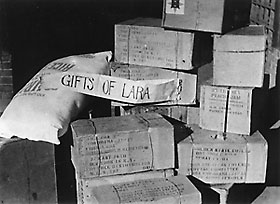 22 Relief supplies from LARA Courtesy of American Friends Service Committee A variety of goods to help many people in their daily lives such as foodstuffs, clothing and medical supplies were sent as well as goats and dairy cows. The allocation and distribution of the relief supplies was handled in collaboration between the LARA Central Committee and the Ministry of Health and Welfare, with the supplies sent to all prefectures and administrative divisions. |
 |
23 LARA aid supply receipt ledger July 1948 Courtesy of Honkawa Elementary School This ledger is a record of aid supplies provided to Honkawa Elementary School. Mentioned are dried udon noodles and sugar. The table indicates the volume distributed and the number of recipients. |
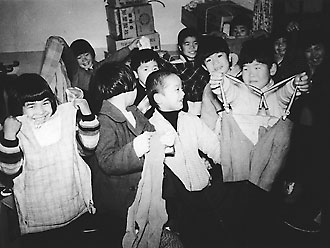 24 Happy children receiving LARA supplies Around 1947 Courtesy of Honkawa Elementary School Together with the large cities of Tokyo and Osaka, Hiroshima was considered to be a region requiring emergency supplies and first received supplies when LARA first began operations in 1946. |
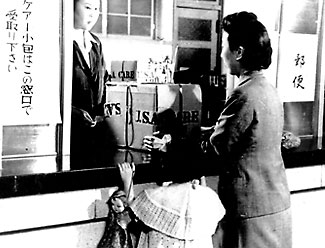 25 Postal deliveries Courtesy of CARE International Japan Sometimes CARE packages were sent personally from relatives overseas to a specific recipient. When packages were addressed to a specific recipient, they were sent after the address was confirmed by return postcard. |
|
26 Aid from CARE Courtesy of CARE International Japan CARE began full-scale relief activities centered mainly on "CARE packages" that were sent out across Japan. The supplies were divided by type such as foodstuffs, daily necessities, clothing and bedding before being sent out. |
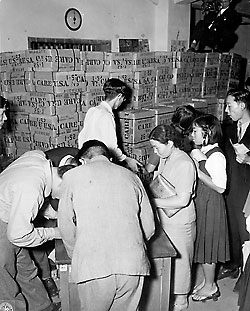 |
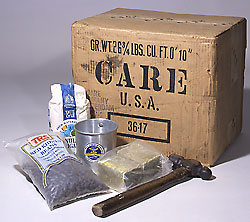 27 CARE package box and supplies received Collection of Mr. Edmund Reinhard and CARE and Care International Japan This box was sent from the United States to Germany. Foods, daily necessities, clothing, and other items were packed into separate boxes. Some included farm and industrial tools the survivors used to rebuild their lives. |
